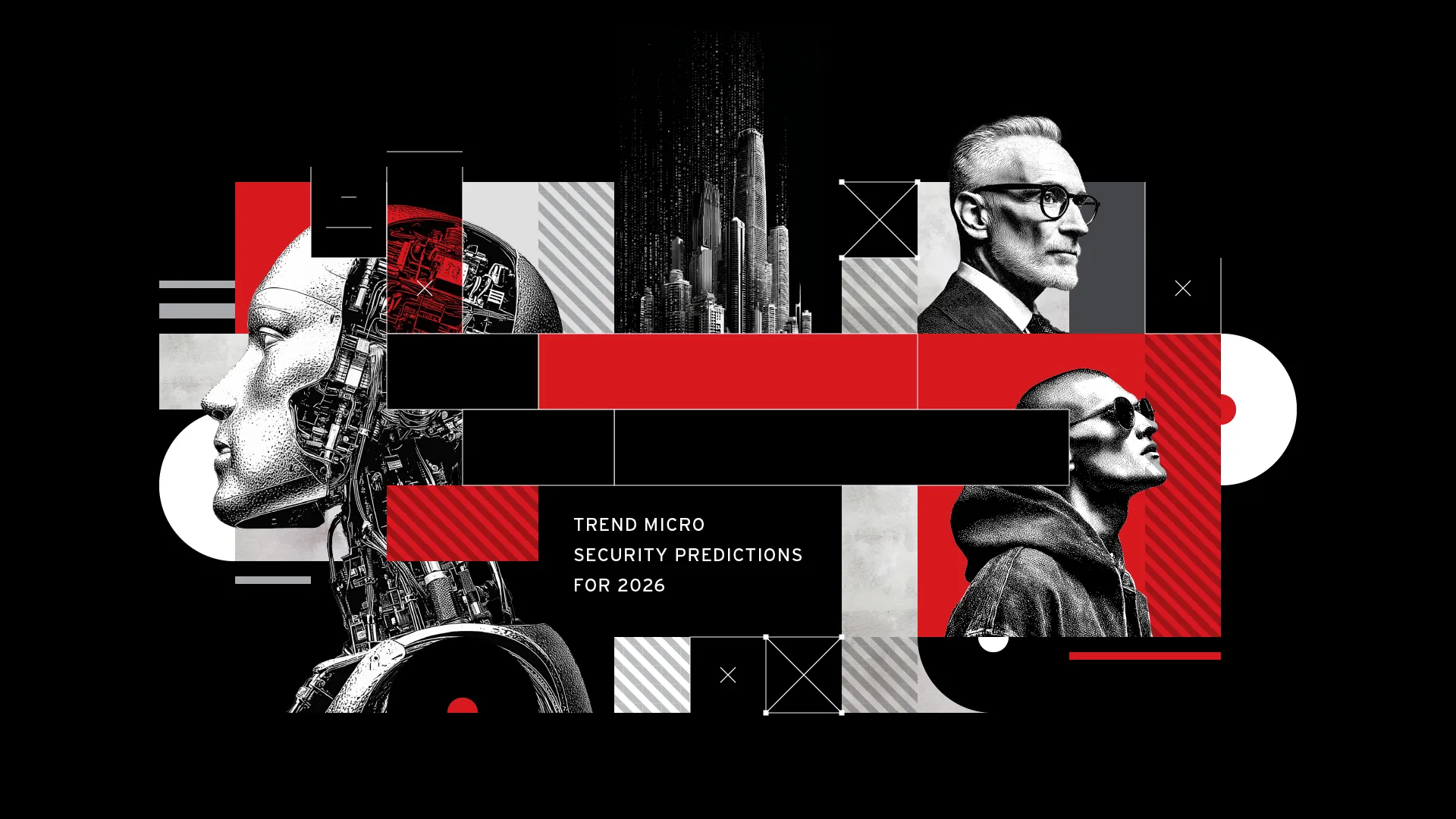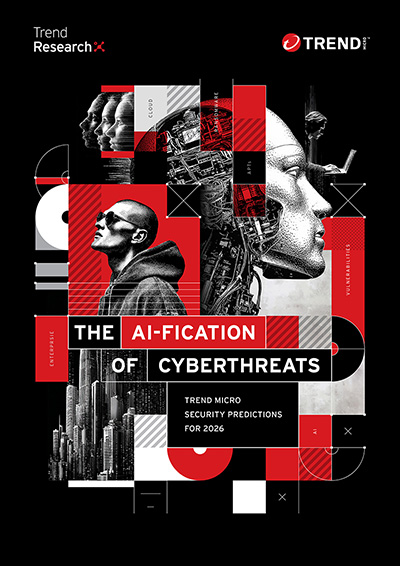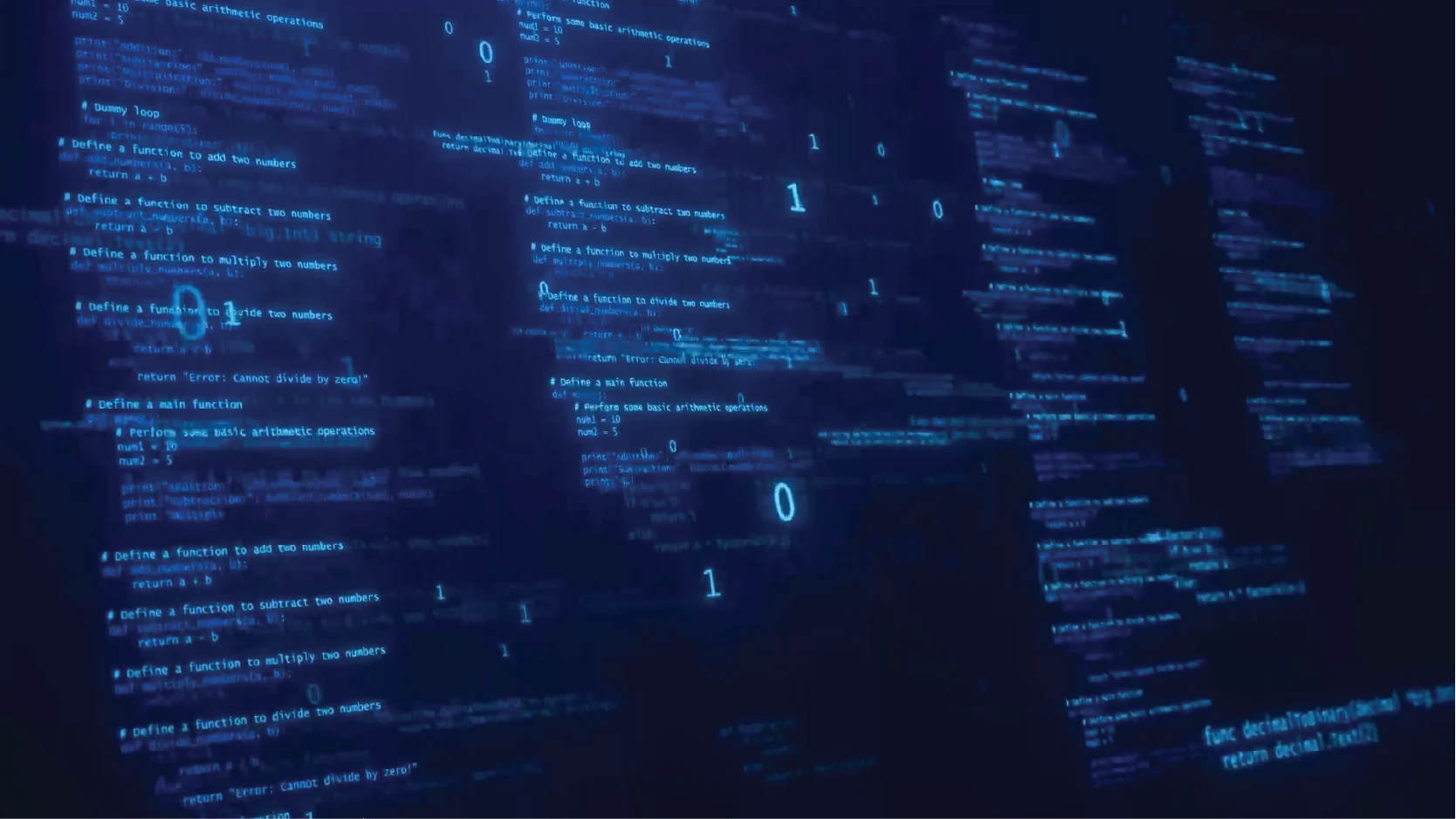SecurityPredictions
The AI-fication of Cyberthreats: Trend Micro Security Predictions for 2026


Our annual security predictions report is designed to help organizations navigate an ever-changing threat landscape with confidence so they can face the challenges and seize the opportunities that the coming year has in store. Drawing on insights from Trend Micro’s global team of researchers and security experts, this year’s edition highlights the trends we believe will shape 2026 and beyond.
The cybersecurity landscape is entering a new era, one shaped by automation and constant connection. Businesses are embracing AI tools to boost efficiency, sharpen decision-making, and unlock new opportunities. However, cybercriminals are also using these tools to automate reconnaissance, launch phishing campaigns, and carry out attacks at scale. What once required deep expertise can now be done with minimal effort, as AI-driven automation levels the playing field between skilled attackers and opportunistic threat actors.
Today’s organizations rely on sprawling networks of cloud platforms, third-party vendors, and interconnected systems, many of which lie outside their direct control. In such environments, even a single weak point, such as a misconfigured setting, a compromised supplier, or an exposed credential, can trigger a ripple effect. As companies continue to weave AI and automation into their operations, striking the right balance between innovation and security will be one of the defining challenges of the years ahead.
Our report, “The AI-fication of Cyberthreats: Trend Micro Security Predictions for 2026,” explores how these forces are reshaping the threat landscape and where the most significant risks are likely to emerge. For 2026, we’ve identified six key focus areas: AI threats, advanced persistent threats (APTs), enterprise threats, cloud threats, ransomware, and vulnerabilities. Across every front, one trend is clear: Cyberthreats are becoming faster, more automated, and more coordinated than ever before.
AI

AI has become the engine of digital innovation, yet at the same time, it also fuels cyberattacks with a speed and sophistication that increasingly outpace human defenders. As the core of our 2026 security predictions, AI represents the defining force reshaping how organizations build, automate, and defend, while simultaneously enabling attackers to operate with unprecedented speed and precision. Understanding this duality is essential to anticipating where the next wave of threats will emerge.
Vibe coding exemplifies this paradox. Its integration into development platforms has transformed how teams build and deploy software, enabling rapid prototyping and faster releases. Yet this acceleration comes at a cost: AI-generated code can be highly unsecure, leading to attack paths into production systems.
“Vibe coding is a double-edged sword. It helps create tools and proofs of concept very quickly. But deploying vibe-coded modules into production software or daily business processes carries significant risk, especially without knowing what sorts of vulnerabilities might have been inadvertently injected into the code by the vibe-coding AI.”
— Numaan Huq, Senior Threat Researcher
Beyond coding, agentic AI introduces a new class of threats. These autonomous systems, capable of reasoning and executing complex actions, are now being deployed across industries to optimize workflows, manage operations, and interact with real-world systems. But when an agent hallucinates, is manipulated, or is compromised, the consequences can be devastating, altering supply chains, draining accounts, or disrupting infrastructure without human awareness. In 2026, the defining challenge for cybersecurity will be learning to defend against intelligent, adaptive, and autonomous threats.
APTs

For 2026, we’ve chosen to spotlight advanced persistent threats (APTs) because they remain the most persistent and politically charged form of cyber conflict, where innovation, espionage, and global power dynamics collide. These campaigns no longer unfold quietly in the shadows; they are becoming faster, smarter, and more interconnected than ever before.
“2026 is unlikely to represent a wholesale reinvention of APT operations. Rather, it will be a year in which evolutionary changes accelerate. The core shift will be the integration of AI to optimize and automate major stages of the attack lifecycle, enabling more adaptive and efficient campaigns.”
— Kakara Hiroyuki, Senior Threat Researcher
We foresee threat actors using large language models (LLMs) to analyze stolen data to identify valuable intelligence and even use them to learn from authentic communication content to craft more convincing phishing content that victims are more likely to believe.
Generative models will be able to craft nearly flawless phishing lures, while AI-driven reconnaissance will map entire networks with great accuracy. Attackers will adopt AI-powered living-off-the-land techniques, using LLMs to generate commands that mimic legitimate activity and evade detection. Compromised enterprise AI models and poisoned supply chains will further become powerful enablers, allowing attackers to weaponize trust itself and spread compromise across industries.
Even the human factor is being reimagined. Nation-state actors now use AI to forge synthetic identities and deepfake-assisted personas capable of infiltrating organizations from within. Once inside, they can quietly alter code, steal data, or sabotage systems under the guise of legitimate work. In 2026, APTs will not only evolve, but also adapt.
ENTERPRISE

In the race toward digital transformation, enterprises are pushing boundaries faster than ever before. But every leap in innovation comes with an equal measure of risk, as the same technologies driving efficiency also open new pathways for exploitation.
"Legacy systems and outdated products remain one of the biggest ticking time bombs heading into 2026. Many enterprises still rely on unpatched or unsupported hardware and software deeply integrated into their operations, creating blind spots that modern security tools can’t fully protect.”
— Sarah Pearl Camiling, Cybersecurity Researcher and Threat Hunter
Many organizations still rely on unpatched servers, deprecated software, and hardware that weren’t designed for today’s hyperconnected environments. What once appeared to be manageable IT debt has evolved into a growing liability, with attackers increasingly targeting forgotten APIs, misconfigured cloud services, and neglected edge devices. At the same time, identity has become a central pressure point in enterprise security. AI-driven social engineering now enables attackers to convincingly imitate trusted users, making it harder to detect. Meanwhile, identity systems originally designed for human users are now being extended to manage autonomous agents that hold significant access rights, creating new challenges for controlling privileges and preventing lateral movement.
This is why we’ve turned our attention to enterprise threats: In 2026, a large portion of the threats to enterprises will come from within, such as the silent misuse of trusted systems, compromised automation pipelines, and insiders (human or AI) operating under legitimate credentials. The line between business process and attack vector is blurring.
CLOUD

As organizations pour their most critical operations into cloud platforms, threat actors are following close behind by probing, exploiting, and adapting more and more quickly. Despite widespread multi-cloud adoption, nearly half of organizations still lack full visibility into their cloud assets, leaving blind spots that enable cross-platform attacks. What began as a story of transformation has become a story of exposure. For our 2026 predictions, we’ve chosen to focus on cloud threats because they now sit at the core of digital transformation, where a single misstep in configuration or identity management can cascade into massive disruption across industries.
"As organizations adopt hybrid and multi-cloud setups, we anticipate new risks emerging from the added complexity. A big one is the lack of unified visibility and control.”
— William Gamazo Sanchez, Senior Cloud Threat Researcher
In the year ahead, attackers will weaponize everything from advanced phishing kits and poisoned container images to multi-cloud misconfigurations and exposed credentials. Hybrid environments will grow so complex that even seasoned defenders might struggle to maintain full visibility of what’s running, and where. Meanwhile, cloud-based GPU systems will emerge as prime targets, coveted for both their compute power and the sensitive data that might linger in shared memory. Each new service, API, and integration point will expand the cloud’s connectivity and, with it, its vulnerabilities.
This rising complexity is what will make the cloud threat landscape impossible to ignore in 2026. Misconfigurations, overprivileged accounts, and hybrid blind spots will continue to act as the enablers of major breaches. As attackers exploit trust relationships and automation pipelines, defenders will race to keep pace in an ecosystem that never stops changing.
RANSOMWARE

In addition to being one of the most prevalent modern threats, ransomware represents a perfect storm of automation, AI, and exploitation, where the traditional cybercrime model is combined with autonomous systems capable of running attacks end to end. As payment rates fall and defenders improve, threat actors will look for new avenues of monetization: exposing stolen data, manipulating media, and using AI to personalize coercion in real time.
We foresee ransomware operations exploiting supply chains, poisoned software updates, and cloud services to silently infiltrate trusted ecosystems. Attackers will rent cloud GPUs, automate data mining, and hijack legitimate infrastructure to maximize impact. Meanwhile, the rise of AI-powered ransomware-as-a-service (RaaS) will lower the barrier to entry for ransomware operations, allowing anyone with access to automated tools to launch sophisticated campaigns, fueling a surge in smaller, faster, and more unpredictable attacks.
"The proliferation of AI-powered RaaS platforms will further democratize cybercrime, allowing even novice criminals to deploy highly effective attacks.”
— Janus Agcaoili, Senior Threat Research Engineer
This is why ransomware will remain a defining threat of the cybersecurity landscape even in the coming year. It’s evolving from a disruptive event into a systemic issue. Every enterprise dependency, from AI models and supply chains to APIs and even business relationships, will double as an attack surface. The future of ransomware isn’t about just encryption, but also the exploitation of trust itself. For enterprises, the real danger lies in the aftermath: the prolonged operational paralysis, data exposure, and erosion of stakeholder trust that follow each attack.
VULNERABILITIES

Vulnerabilities figure in our 2026 security predictions because they represent the foundation of every major breach, the often unseen weaknesses that automation and AI now exploit at unprecedented speed. Vulnerabilities are no longer limited to traditional software; they now extend to the logic, data, and code that drive AI itself.
In 2026, attackers will use AI to discover and weaponize vulnerabilities faster than defenders can respond to them. The same automation that powers innovation will amplify exploitation, allowing threat actors to instantly scan, test, and adapt exploits at scale. Even familiar issues, such as SQL injection or misconfigured APIs, will resurface in new, AI-enabled forms. Meanwhile, unsecure AI-generated code created through vibe coding will silently introduce bugs and backdoors into production environments, compounding systemic risk across the supply chain.
"We will see increased use of AI-enabled bug hunting and exploitation systems to quickly find and exploit weaknesses in open-source software. These cyber reasoning systems are a quickly evolving area of research where improvements in newly released LLMs can improve the efficacies of the discoveries.”
— Brian Gorenc, Vice President of Threat Research
The impact will be felt far beyond the IT stack. A single flaw in an open-source package, inference engine, or third-party library can cascade across industries, disrupting services and eroding trust. As patching windows shrink and exposure grows, enterprises will struggle to balance innovation with security. In 2026, managing vulnerabilities will mean keeping pace with an attack surface where a single oversight in code, model, or configuration can trigger disruption across organizations.

Navigating cyber defense in the age of automation and autonomy

The rise of AI and its applications toward automation and autonomy have completely reshaped the cybersecurity landscape. AI is no longer just an extra tool in a hacker’s arsenal; it has become a driving force behind faster, smarter, and more complex cyberattacks. This shift is unfolding in a world that’s more connected than ever before, where cloud services, supply chains, and third-party tools form vast digital ecosystems that are tightly woven together, and therefore likely susceptible together as well.
Securing modern organizations in 2026 and beyond will require a proactive, adaptive approach that extends beyond traditional user- and network-focused defenses. Security must evolve alongside the rise of AI-driven and agentic systems, embedding guardrails and continuous validation into every AI application and workflow. It must include regular adversarial testing and automated red-teaming to evaluate the resilience of rapidly evolving LLM-based and AI-powered applications, turning uncertainty from constant iteration into actionable insight.
A comprehensive strategy must combine continuous monitoring, behavioral detection, and risk-based vulnerability management, while integrating security across every stage of digital transformation. Organizations must safeguard legacy infrastructure, secure cloud and multi-cloud environments, protect supply chain integrity, and maintain end-to-end visibility across all assets and integrations.
As the boundaries between innovation and exposure blur, cybersecurity will become a critical enabler of business resilience and trust. Organizations that invest in forward-looking security strategies, balancing rapid technological adoption with rigorous protection, will be best positioned to thrive in the new era of automated, autonomous, AI-driven threats.
Like it? Add this infographic to your site:
1. Click on the box below. 2. Press Ctrl+A to select all. 3. Press Ctrl+C to copy. 4. Paste the code into your page (Ctrl+V).
Image will appear the same size as you see above.
Ultime notizie
- Estimating Future Risk Outbreaks at Scale in Real-World Deployments
- The Next Phase of Cybercrime: Agentic AI and the Shift to Autonomous Criminal Operations
- Reimagining Fraud Operations: The Rise of AI-Powered Scam Assembly Lines
- The Devil Reviews Xanthorox: A Criminal-Focused Analysis of the Latest Malicious LLM Offering
- AI Security Starts Here: The Essentials for Every Organization



 Complexity and Visibility Gaps in Power Automate
Complexity and Visibility Gaps in Power Automate AI Security Starts Here: The Essentials for Every Organization
AI Security Starts Here: The Essentials for Every Organization The AI-fication of Cyberthreats: Trend Micro Security Predictions for 2026
The AI-fication of Cyberthreats: Trend Micro Security Predictions for 2026 Stay Ahead of AI Threats: Secure LLM Applications With Trend Vision One
Stay Ahead of AI Threats: Secure LLM Applications With Trend Vision One